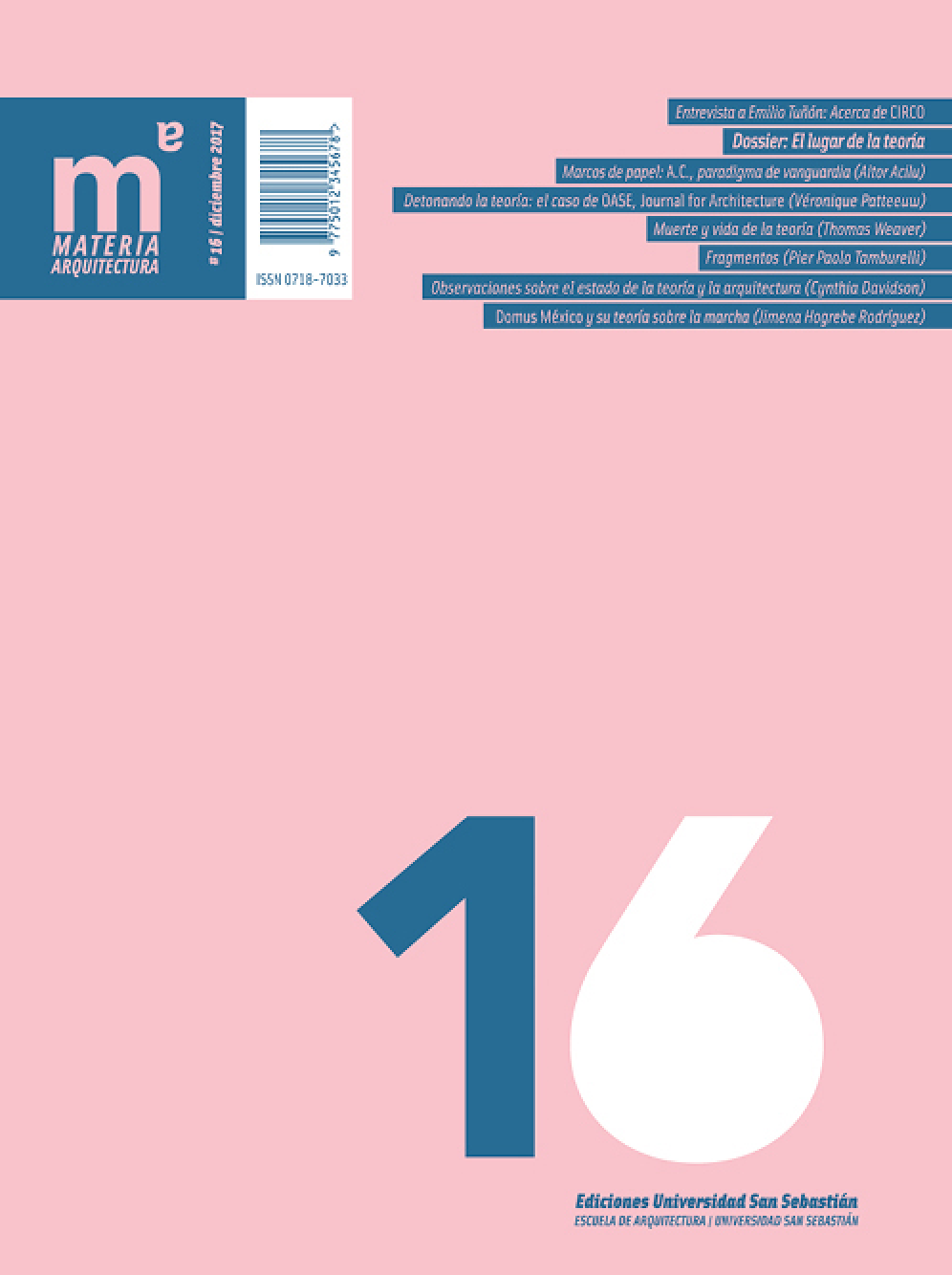The Death and Life of Theory
Article Sidebar
Keywords:
Main Article Content
Abstract
This essay challenges a contemporary understanding of theory, largely through the assertion that architecture becomes servile when only read theoretically. It explains some of the conceptions involved in the editing of the long-running journal AA Files, among them the preferential treatment this publication gives to history, and makes a more fundamental argument that architecture does not need the appliqué of philosophy because multiple ideas and allusions are already embedded within it. Nevertheless, it recognises that among all of architecture’s various objects is theory itself. Following Alberti’s distinction between theory and practice it argues that any form of architectural production not in the form of building is therefore by definition a theory.
Article Details
Materia Arquitectura provides immediate and free access to all the content of this online edition, published simultaneously with the print edition.
Materia Arquitectura does not charge authors for any concept.
All contents of this electronic edition are distributed under the Creative Commons license of "Attribución-shareAlike 4.0 Internacional" (CC-BY-SA).
The rights of the published texts and images belong to their authors, who grant Materia Arquitectura the license for their use. The management of the permits and the authorization of the publication of the images (or of any material) that contains copyright and its consequent rights of reproduction in this publication is the sole responsibility of the authors of the articles.
As long as they mention their origin, the authors are free to distribute their articles by other means. Any total or partial reproduction of the material must mention its origin.
Downloads
References
ALBERTI, L. B. (1996). On the Art of Building in Ten Books. Cambridge, MA: MIT Press.
BANHAM, R. (1988). Theory and Design in the First Machine Age. Londres, Inglaterra: Butterworth scientific.
COLQUHOUN, A. (2009). From Bricolage to Myth, or How to Put Humpty-Dumpty Together Again. En A. Colquhoun, Alan Colquhoun: Collected Essays in Architectural Criticism. (pp. 140–151). Londres, Inglaterra: Black Dog Publishing.
EVANS, R. (1996). Figures, Doors, Passages. En R. Evans, Translations from Drawing to Building and Other Essays (pp. 54–91). Londres, Inglaterra: Architectural Association.
LUCARELLI, J. (February 2013). The Consecution of Gordon Lish: An Essay on Form and Influence. Numéro Cinq, IV(2), Online Journal.
OCKMAN, J. (2017a). Slashed - e-flux Architecture - e-flux. Recuperado de www.e-flux.com/architecture/history-theory/159236/slashed/
OCKMAN, J. (2017b). Architectural Education as the Research Topic [Video]. Recuperado de www.aaschool.ac.uk//VIDEO/lecture.php?ID=3764
SUMMERSON, J. (1986). Georgian London. Harmondsworth, Inglaterra: Penguin Books.
TRILLING, L. (1957). Profession: Man of the World. En L. Trilling, A Gathering of Fugitives; essays. (pp. 89–116). Londres, Inglaterra: Secker & Warburg.
WEAVER, T. (2016). Loose Sally. Perspecta, (49: Quote), 261–267.
Most read articles by the same author(s)
- Thomas Weaver, El ensayo como forma , Materia Arquitectura: No. 09 (2014): Materia Arquitectura 09 (Agosto/August 2014)
- Thomas Weaver, Muerte y vida de la teoría , Materia Arquitectura: No. 16 (2017): Materia Arquitectura 16 (Diciembre/December 2017)
- Thomas Weaver, The Essay as Form , Materia Arquitectura: No. 09 (2014): Materia Arquitectura 09 (Agosto/August 2014)
